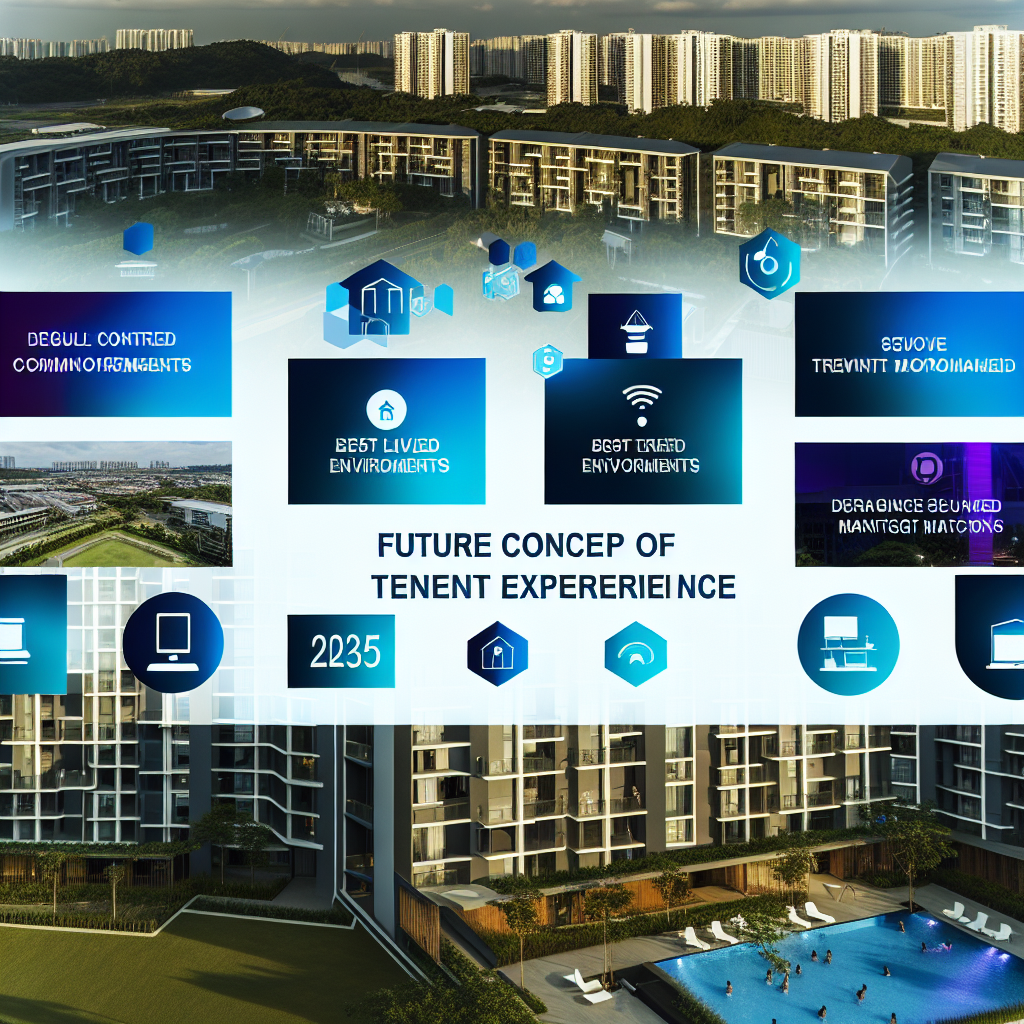Maximizing Resident Benefits: Innovative Community Amenities for Enhanced Tenant Experience in 2025
As we approach 2025, the landscape of residential living is undergoing a transformative shift, with a focus on maximizing resident benefits through innovative community amenities. This evolution is driven by the growing demand for enhanced tenant experiences, which are becoming a pivotal factor in the decision-making process for prospective residents. The integration of cutting-edge technology, sustainable practices, and community-centric designs is at the forefront of this change, promising to redefine the way we perceive residential living.
To begin with, the incorporation of smart home technology is revolutionizing the residential experience. In 2025, it is anticipated that smart home systems will be a standard feature in many residential communities. These systems offer residents unparalleled convenience and control over their living environments, from adjusting lighting and temperature to managing security systems remotely. Moreover, the integration of artificial intelligence in these systems allows for personalized experiences, adapting to the preferences and routines of individual residents. This not only enhances comfort but also contributes to energy efficiency, aligning with the growing emphasis on sustainable living.
In addition to technological advancements, the focus on sustainability is reshaping community amenities. Green spaces, once considered a luxury, are now essential components of residential developments. These areas provide residents with a serene environment to relax and connect with nature, promoting mental well-being. Furthermore, community gardens are gaining popularity, offering residents the opportunity to engage in sustainable practices by growing their own produce. This not only fosters a sense of community but also encourages a healthier lifestyle. The integration of renewable energy sources, such as solar panels and wind turbines, further underscores the commitment to sustainability, reducing the carbon footprint of residential communities.
Another significant trend is the emphasis on fostering a sense of community among residents. In 2025, residential developments are expected to prioritize communal spaces that encourage social interaction and collaboration. Co-working spaces, for instance, are becoming increasingly popular, catering to the growing number of remote workers. These spaces provide a professional environment within the residential community, eliminating the need for long commutes and enhancing work-life balance. Additionally, communal kitchens and dining areas are being introduced to facilitate social gatherings, allowing residents to connect over shared meals and experiences.
Moreover, wellness amenities are taking center stage in enhancing tenant experiences. Fitness centers equipped with state-of-the-art equipment, yoga studios, and wellness spas are becoming standard offerings in residential communities. These facilities cater to the holistic well-being of residents, promoting physical health and relaxation. Furthermore, the inclusion of wellness programs, such as meditation sessions and nutrition workshops, underscores the commitment to supporting residents’ overall well-being.
In conclusion, the residential living experience in 2025 is poised to be significantly enhanced through innovative community amenities. The integration of smart home technology, sustainable practices, and community-centric designs is transforming residential developments into vibrant, self-sustaining ecosystems. As we move forward, it is imperative for developers to continue prioritizing resident benefits, ensuring that residential communities not only meet but exceed the evolving expectations of tenants. By doing so, they will create environments that foster well-being, sustainability, and a strong sense of community, ultimately redefining the future of residential living.
Revolutionizing Property Perks: Convenient Living and On-Site Trash Solutions for Community Value
In the evolving landscape of residential living, the focus on enhancing community value through innovative property perks has become increasingly significant. As we look towards 2025, the integration of convenient living solutions and on-site trash management systems is set to revolutionize the way residents experience their communities. This shift not only aims to improve the quality of life for residents but also seeks to foster a sense of community and environmental responsibility.
To begin with, the concept of convenient living has taken center stage in property management strategies. Developers and property managers are now prioritizing amenities that cater to the modern resident’s desire for efficiency and ease. For instance, smart home technologies are being integrated into residential units, allowing residents to control lighting, temperature, and security systems remotely. This not only enhances the living experience but also contributes to energy efficiency, aligning with broader sustainability goals. Furthermore, the inclusion of co-working spaces within residential complexes addresses the growing trend of remote work, providing residents with a professional environment without the need to commute.
In addition to technological advancements, the physical layout of residential communities is being reimagined to promote convenience. Mixed-use developments, which combine residential, commercial, and recreational spaces, are becoming increasingly popular. These developments offer residents the ability to access essential services, such as grocery stores, fitness centers, and dining options, within walking distance of their homes. This not only reduces the need for transportation but also encourages a more active and engaged lifestyle.
Transitioning to the topic of on-site trash solutions, waste management is a critical aspect of community living that is often overlooked. However, innovative approaches to this issue are proving to be a valuable addition to residential properties. On-site composting facilities, for example, are being introduced to reduce the volume of waste sent to landfills. These facilities not only provide an environmentally friendly waste disposal option but also produce nutrient-rich compost that can be used in community gardens, further enhancing the green spaces within the community.
Moreover, the implementation of smart waste management systems is transforming the way trash is collected and processed. These systems utilize sensors to monitor waste levels in real-time, optimizing collection schedules and reducing the carbon footprint associated with waste transportation. By streamlining the waste management process, these systems contribute to a cleaner and more sustainable living environment.
The integration of these innovative ideas into residential communities is not without its challenges. Property managers must navigate the complexities of implementing new technologies and systems while ensuring that they are accessible and user-friendly for all residents. Additionally, there is a need for ongoing education and engagement initiatives to encourage residents to embrace these changes and participate actively in community sustainability efforts.
In conclusion, as we approach 2025, the focus on revolutionizing property perks through convenient living solutions and on-site trash management is set to redefine community living. By prioritizing efficiency, sustainability, and resident engagement, these innovations promise to enhance the overall value of residential communities. As developers and property managers continue to explore and implement these ideas, the future of community living looks increasingly promising, offering residents a more convenient, connected, and environmentally conscious lifestyle.
Enhancing Community Living: Cutting-Edge Ideas for Resident Benefits and Tenant Experience in 2025
As we approach 2025, the landscape of community living is poised for transformative changes, driven by innovative ideas aimed at enhancing resident benefits and tenant experiences. The evolution of technology, coupled with a growing emphasis on sustainability and well-being, is reshaping how residential communities operate and interact with their inhabitants. This shift is not only about improving the physical environment but also about fostering a sense of belonging and community among residents.
One of the most significant advancements in community living is the integration of smart technology. Smart homes have been a topic of discussion for years, but by 2025, they are expected to become a standard feature in residential communities. These technologies will offer residents unprecedented control over their living spaces, from adjusting lighting and temperature to managing security systems through their smartphones. Moreover, the use of artificial intelligence will enable predictive maintenance, ensuring that potential issues are addressed before they become significant problems, thereby enhancing the overall living experience.
In addition to technological advancements, there is a growing focus on sustainability within residential communities. Developers are increasingly incorporating green building practices, such as using eco-friendly materials and implementing energy-efficient systems. By 2025, it is anticipated that many communities will have adopted renewable energy sources, such as solar panels and wind turbines, to power common areas and individual units. This shift not only reduces the carbon footprint of these communities but also offers residents the benefit of lower utility costs.
Furthermore, the concept of community living is being redefined to prioritize social interaction and mental well-being. As people become more aware of the importance of mental health, residential communities are responding by creating spaces that encourage socialization and relaxation. For instance, communal gardens, rooftop terraces, and co-working spaces are becoming increasingly popular, providing residents with opportunities to connect with their neighbors and engage in activities that promote well-being. These spaces are designed to foster a sense of community, making residents feel more connected and less isolated.
Another innovative idea gaining traction is the implementation of community-centric programs and services. By 2025, many residential communities are expected to offer a range of services that cater to the diverse needs of their residents. These may include wellness programs, such as yoga and meditation classes, as well as educational workshops and cultural events. By providing these services, communities can enhance the quality of life for their residents, making them feel valued and supported.
Moreover, the role of property management is evolving to become more resident-focused. With the aid of technology, property managers can now offer personalized services, such as virtual concierge systems that allow residents to book amenities, schedule maintenance, and receive community updates with ease. This level of personalization not only improves the tenant experience but also builds a stronger sense of community trust and satisfaction.
In conclusion, the future of community living in 2025 is set to be characterized by a harmonious blend of technology, sustainability, and social connectivity. As residential communities continue to innovate and adapt to the changing needs of their residents, the focus will remain on enhancing the overall living experience. By embracing these cutting-edge ideas, communities can create environments that are not only functional and efficient but also nurturing and inclusive, ultimately leading to a more fulfilling and enriched lifestyle for all residents.
Discover innovative ideas for enhancing resident benefits and community living in 2025! Explore how these advancements can transform your community experience. Learn more now!



